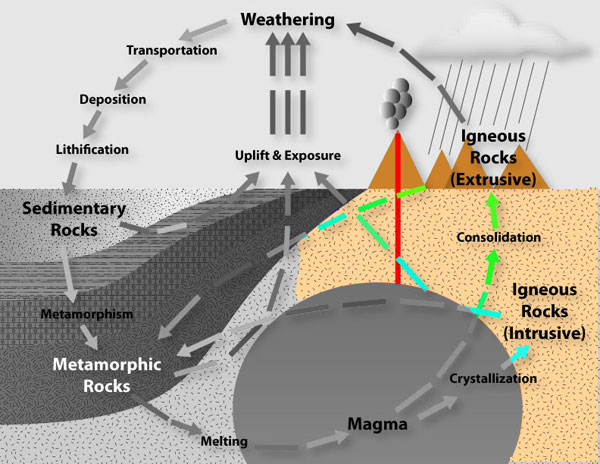There are places on Earth that are so hot that rocks melt to form magma. Because magma is liquid and usually less dense than surrounding solid rock, it moves upward to cooler regions of the Earth. As the magma loses heat, it cools and crystallizes into an igneous rock. Magma can cool on the Earth’s surface, where it has erupted from a volcano (extrusive rock) or under the Earth’s surface, where it has intruded older rocks (intrusive rock).
The composition of magma is limited to the eight common elements of the earth’s crust. These elements combine within a melt to form silicate minerals, the most common minerals of igneous rocks. These silicate minerals include feldspars (plagioclase feldspar, potassium feldspar), quartz, micas (muscovite, biotite), pyroxenes (augite), amphiboles (hornblende), and olivine. These minerals make up over 95% of the volume of the common igneous rocks, making igneous rocks easy to identify.
